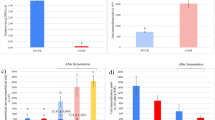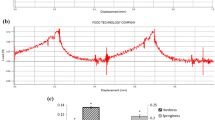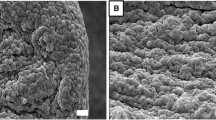Abstract
The continuous wine fermentation process, which employs a newly designed tapered column type bioreactor and immobilized yeast cells (Montrachet 522), was studied and its fermentation performance was compared with batch and suspended cell continuous wine fermentation systems.
It was found that a stable continuous culture fermentation process could be maintained for a period of 2–3 mo when the new bioreactor system packed with immobilized yeast cells was employed. The new bioreactor containing immobilized yeast cells performed significantly better than the suspended cell culture system or batch culture. The effluent wine from the continuous fermentor system contained 7.1% (v/v) ethanol and 0.18% (w/v) residual sugar at 0.01 h-1 dilution rate. The new continuous bioreactor system also gave 17–34 times higher maximum ethanol productivity compared to the conventional batch wine fermentation. At a low dilution rate, 0.01-1, as high as 92% sugar to ethanol yield was achieved.
Based on the results obtained from this study, the possibility of developing a continuous wine cooler fermentation process was demonstrated. A two-stage continuous wine fermentation system may be designed and operated. The grape juice can be fed into the first-stage that is operated at about 0.2 h-1 dilution rate and the effluent from the first-stage is fed into the second-stage continuous fermentor operated at about 0.01 h-1 dilution rate. By doing so, a wine cooler can be produced continuously and efficiently, by employing the newly designed tapered column type bioreactor charged with the immobilized yeast cells.
Similar content being viewed by others
References
Amerine, M. A., Berg, H. W., Kunkee, R. E., Ough, C. S., Singleton, V. L., and Webb, A. D. (1980),The Technology of Wine Making, 4th edition, AVI, Westport, CT, pp. 272–273.
Ryu, D. D. Y. (1984),Wine Industry Technical Symposium, pp. 61–68.
Cootes, R. L., Rogers, P. L., and Lee, T. H. (1980),Food Technol. in Australia 32, 242–248.
Schildmann, J. A. (1981),Sixth International Oenological Symposium, Mainz, Germany. pp. 289–297.
Kolot, F. B. (1980),Process Biochemistry, Oct./Nov.
Narzib, L. and Hellich, P. (1971),Brauwelt 67, 1491.
Kierstan, M. and Bucke, C. (1977),Biotechnol. Bioeng. 19, 387.
Wada, M., Kato, J., and Chibata, I. (1980),Eur. J. Appl. Microbiol. Biotechnol. 10, 275–278.
Lim, F. (1983),Biomedical Application of Micro-encapsulation, CRC Press, Boca Raton, FL, pp. 139–141.
Totsuka, A., Otsuka, K., and Hara, M. (1980), “Production of wine from grape juice by immobilized yeast,”Japanese Patent S55-159789.
Koga, K. (1985),Netsu Sokutei 12, 205–212.
Lee, T. H., Ahn, J. C., and Ryu, D. D. Y. (1983),Enzyme Microb. Technol. 5, 41–45.
Ryu, D. D. Y., Kim, Y. J., and Kim, J. H. (1984),Biotechnol. Bioeng. 26, 12–16.
Hamamci, H. (1986), “Performance of tapered column packed-bed bioreactor for ethanol production,” University of California Davis, Ph.D. Thesis.
Author information
Authors and Affiliations
Rights and permissions
About this article
Cite this article
Uematsu, K., Fong, D. & Ryu, D.D.Y. Development of continuous fermentation using immobilized yeast cells for wine cooler process development. Appl Biochem Biotechnol 19, 177–188 (1988). https://doi.org/10.1007/BF02921482
Received:
Accepted:
Issue Date:
DOI: https://doi.org/10.1007/BF02921482




